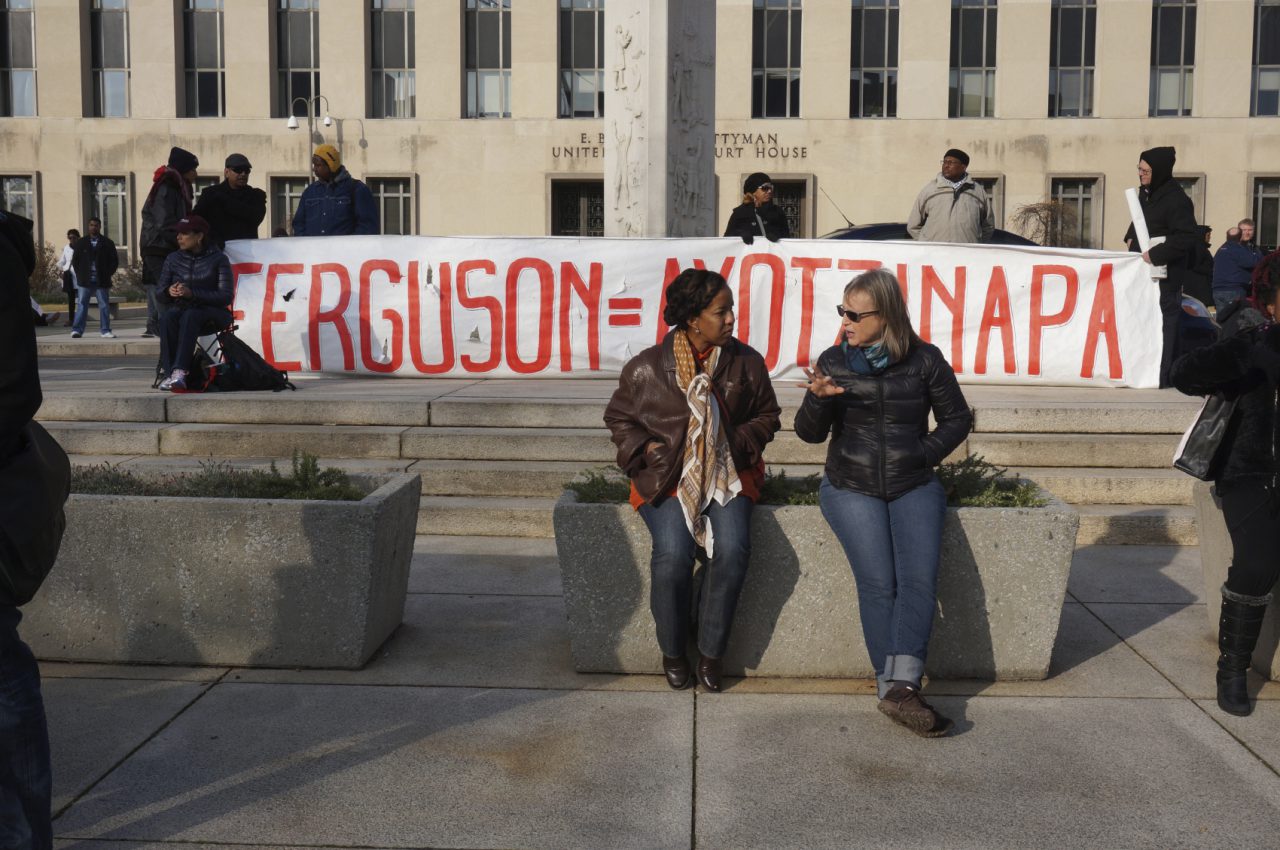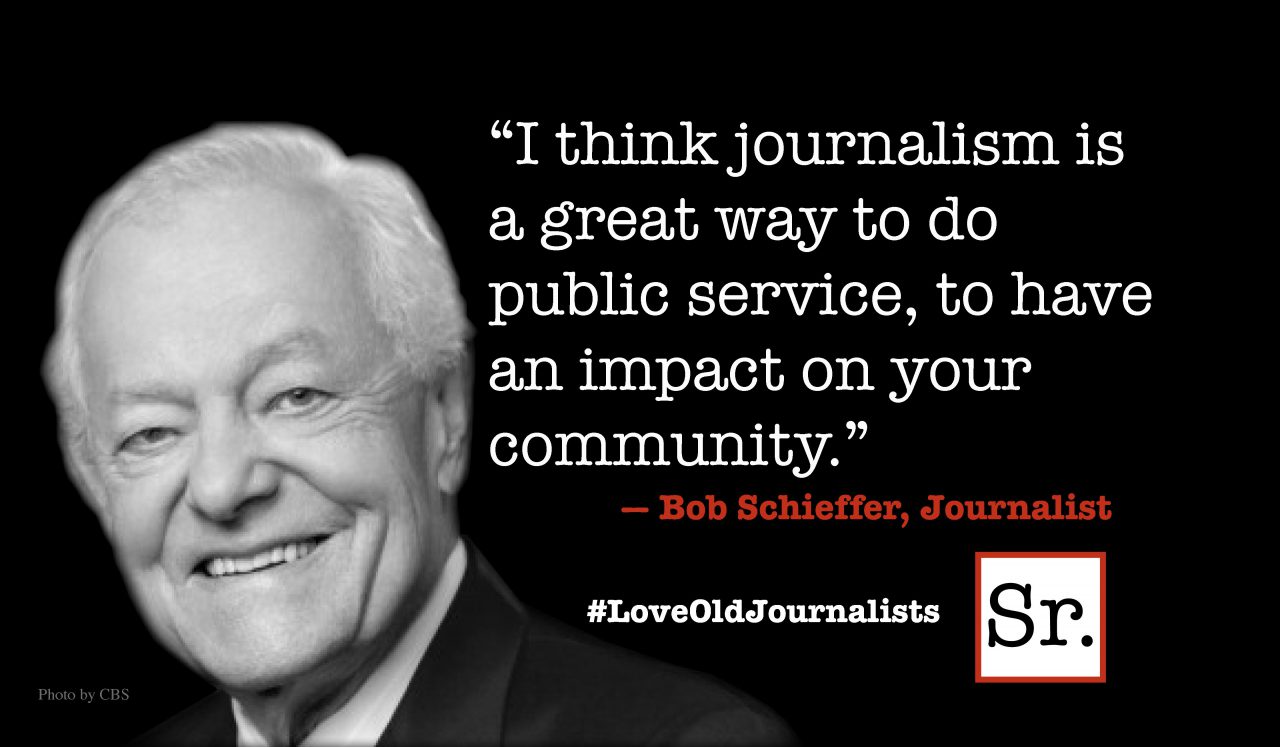Winter has not chilled the ongoing protests over the summer slayings of unarmed African American men by police.
Clergy and religious leaders have been major players in the demonstrations. Some, like Al Sharpton, are national figures. Many are lesser-known pastors in local communities who want to see justice done.
The National Council of Churches governing board went to Ferguson, Mo., where the unarmed black teenager Michael Brown was shot and killed August 9 by a police officer, to be a prophetic presence when a grand jury decision about the culpability of the officer was handed down.
The Council also deplored the July 17 death of Eric Garner, an unarmed black man who died after a police officer subdued him with what some witnesses said was a choke hold.
“These killings, as well as those of hundreds of other Americans each year at the hands of militarized police forces, is of great and growing concern,” said National Council President Jim Winkler.
“A peaceful, healthy society requires trust and positive relationships between citizens and law enforcement,” Winkler said. “That can best occur in circumstances in which … racism and inequality are being addressed.”
At first glance, these and other clergy statements appear to accuse law enforcement officers of reacting out of racist impulses.
No doubt racism accounts for many police assaults on persons of color, and no doubt religious leaders have a responsibility to condemn the sin of racial enmity wherever they see it.
But do religious leaders also have responsibilities that extend beyond condemnation?
Historically, religious leaders have played pivotal roles in weeding out social evils in U.S. society. In most cases, leaders have taken clear stands against the evils they confronted. Prohibitionist Carrie Nation was an imposingly large woman known for chasing men out of bars with an ax, shouting, “I am a bulldog running along at the feet of Jesus, barking at what he doesn’t like.”
Other religious crusades against evil left little doubt who leaders thought the bad guys were. For abolitionists, the evildoers were slave owners. For suffragists, the malefactors were males who jealously guarded their electoral supremacy. For authors of the 1908 Social Creed of the Churches, scoundrels were capitalists and factory owners who forced children to work twelve hours a day. For civil rights marchers of the fifties and sixties, it would be hard to imagine more maliciously ignorant adversaries than Bull Connor and his police dogs. For anti-war protestors of the sixties, the bad guys were soldiers, sailors, and the military industrial complex.
Readers of the bible and other religious scripture know the authors of holy writ were not interested in exploring the causes of evil. Slaveholders, boozers, capitalists, oppressors of women, Jim Crow cops, and arms merchants are bad people. Period.
For those who march to protest shootings of unarmed African American men and grand jury inactions, the bad guys are racist cops.
It all seems so simple. And so traditional.
Yet in the long history of religious social engagement in the U.S., one activist declined to condemn all the bad guys as irredeemable scum. John Woolman, an 18th century Quaker preacher, was an abolitionist, pacifist, and animal rights advocate. What distinguished him from other activists is that he didn’t believe the bad guys were automatically hell-bound.
Woolman must have cut a comical figure as he traveled around the primordial areas of New Jersey, Pennsylvania, and Philadelphia. Once he realized the caustic dyes used to blacken traditional Quaker wool coats were blinding the slaves of tailors, he discarded his own coat. According to legend, he wore wrinkled white muslin suits instead. When he saw coach drivers whip their horses, he decided to walk instead.
Most notably, Woolman, an itinerant notary public, refused to endorse the wills of clients who intended to bequeath slaves to their successors. “Many slaves on this continent are oppressed,” he would explain to his patrons, “and their cries have reached the ears of the Most High. Such are the purity and certainty of his judgments, that he cannot be partial in our favor.”
John Woolman must have been an exceptionally persuasive man, because most of his clients released their slaves. He could have condemned them as evil sinners. Instead, he convinced them to step into the light.
That was an amazing accomplishment, and not one that was entirely consistent with the one-sided traditions of U.S. protest movements.
Amid the swirling passions unleashed by the tragic events in Ferguson and New York, is such Woolman-like reconciliation possible?
It’s possible, perhaps, but it would require a radical empathy on all sides that hardly seems possible.
Scripturally and theologically, as Woolman knew, the foundation of such reconciliation was laid millennia ago. Jesus put it this way: “You shall love the Lord your God with all your heart, and with all your soul, and with all your mind … And you shall love your neighbor as yourself.” (Matthew 22:37)
This variation on the golden rule is found in most religions. Rabbi Hillel said, “What is hateful to you, do not do to your fellow: this is the whole Torah; the rest is the explanation; go and learn.” The Prophet Muhammad said, “As you would have people do to you, do to them; and what you dislike to be done to you, don't do to them.”
It’s bewildering that a tenet proclaimed at such high authority, and so universally held, plays such an insignificant role in human engagements.
In the recent protests over the deaths of Michael Brown and Eric Garner, even expressions of empathy were polarizing. Protest signs emblazoned, “Black Lives Matter,” were instantly countered with, “Police Lives Matter,” and Garner’s sad last words, “I Can’t Breathe,” are still chanted in protest against the New York police.
Yet the key to reconciling these conflicts remains obvious. Protestors and cops alike need to reflect on the ancient principle: what is hateful to you, don’t do to your fellow.
In New York, the conflict between Mayor Bill de Blasio and the police union has become emblematic of the standoff. De Blasio, a white man, is the father of Dante, a bi-racial son. The mayor is one of the few white fathers who must face a common dilemma of black fathers. He has to warn his son to be especially cautious when confronted by white police officers.
When de Blasio expressed his anxiety about that, the police union excoriated him for not backing up the police.
“The mayor should be teaching his son that police are his friends,” a union leader said.
The union said the mayor should not appear at the funerals of two New York police officers who were shot down in cold blood December 20 by a mad man who seemed to be seeking vengeance for the death of Eric Garner. The assailant, an African American male with a history of mental illness, killed himself.
The mayor, religious leaders, and police may be looking at these tragedies with partially obstructed views. The main obstruction is racism, which continues to be endemic in U.S society. For decades, Christian sociologist Tony Campolo has contended, “You just can’t grow up in the United States without being a racist.”
The election in 2008 of an African American president has convinced many U.S, citizens that they live in a post-racial age. But in many respects, Mr. Obama’s presence in the oval office has only exacerbated racist views and allowed them to rise to the surface.
As the winter of conflict between law enforcement officers and their critics continues, some religious leaders are calling on all participants to take a closer look at their own attitudes toward race, and examine them in the light of God’s greatest commandment — the “golden rule.”
Let me add to that a few personal observations.
As a parent of six adults of color, I recognize that my particular vantage point does not make me any less a racist than anyone else. I wouldn’t be surprised if Mayor Di Blasio feels the same way. By the standard of my former sociology prof Tony Campolo, of course I am a racist. I grew up in a society where racist threads were intricately woven into the social fabric. My prayer is that by recognizing my racism, I can minimize its pernicious effects on my life and the people around me.
And as the son-in-law of a cop, I also recognize that law enforcement officers are true heroes in our society, and that the vast majority of them have felt a profound calling to be of service in their communities.
But still, some cops racially profile individuals by the color of their skin. And some cops will tend to react out of fear or an abundance of caution when they confront males of color in ambiguous situations. Horrific anecdotes include the 1991 beating of Rodney King in Los Angeles; the 1999 shooting in New York of Amadou Diallo, a Guinean immigrant who was reaching for his wallet when he was shot 19 times by police; and in the wake of Hurricane Katrina in 2005, a New Orleans officer fatally shot an unarmed black man named Henry Glover and several of his fellow officers burned his body to cover-up their crime. NOPD officers also shot and killed two unarmed black men on the Danziger Bridge.
The tragic events of 2014 have locked police and protesters in a merciless grip of fear, suspicion, animosity, and hatred. As a result, it can hardly be denied that men of color have good reasons to fear the police, and police have good reasons to fear for their lives when they believe they are being confronted by men of color. Life in the U.S. is too often a double-edged sword of racial tension that will lead inevitably to more tragedies in the years to come.
The only hope is that more religious leaders will be able to extricate themselves from this quagmire of racism and lead all participants to regard one another in the light of history’s most quoted and least applied guideline for living: “love your neighbor as you love yourself.”
The Rev. A. Roy Medley, general secretary of American Baptist Churches USA and chair of the National Council of Churches governing board, recently made it clear that that everyone must embrace as never before the call of religious leaders like Jesus, Mohammed, Hillel, and many more: “What is hateful to you, do not do to others."
“Regardless of the color of our skin,” Medley said, “we all have skin in this crisis.”
For a wider report of religious reaction to the crisis, see









